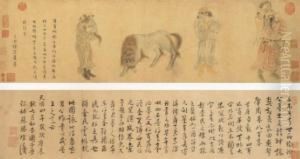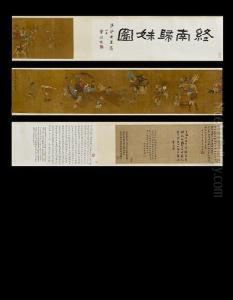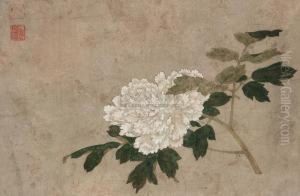Qian Xuan Paintings
Qian Xuan was a Chinese painter from the late Song Dynasty and early Yuan Dynasty, which spanned a period that witnessed significant political and social changes in China. Born in 1235 in Wuxing, now part of Huzhou, Zhejiang, he was initially a civil servant, loyal to the Song Dynasty, but after the Mongol invasion and the fall of the Song in 1279, he found himself out of a job and turned to art as a means of expressing his loyalty to the fallen dynasty and his disdain for the ruling Mongols.
Qian Xuan started his career by painting flowers and birds but later expanded his repertoire to include landscapes and figures, displaying versatility in his artistic expressions. His style is characterized by delicate brushwork combined with a rich use of color, often incorporating themes of reclusion and a yearning for the return of the Song dynasty. After the Mongol conquest, his artwork became a medium through which he expressed his political alignment and his nostalgia for the past.
He is perhaps best known for his 'returning to simplicity' technique, where he combined the meticulous style typical of the Song court with a more freehand approach that would later be associated with literati painting. This innovative style would influence the development of Chinese landscape painting, particularly during the Yuan and Ming dynasties.
Qian Xuan's works were widely appreciated for their poetic and scholarly qualities, which were in line with the literati ideals of the period. Despite his political alignment with the fallen dynasty, his artistic talents were recognized even by those who were in power during the Yuan dynasty. His legacy continued to be influential after his death in 1305, leaving a lasting impact on the development of Chinese painting.


